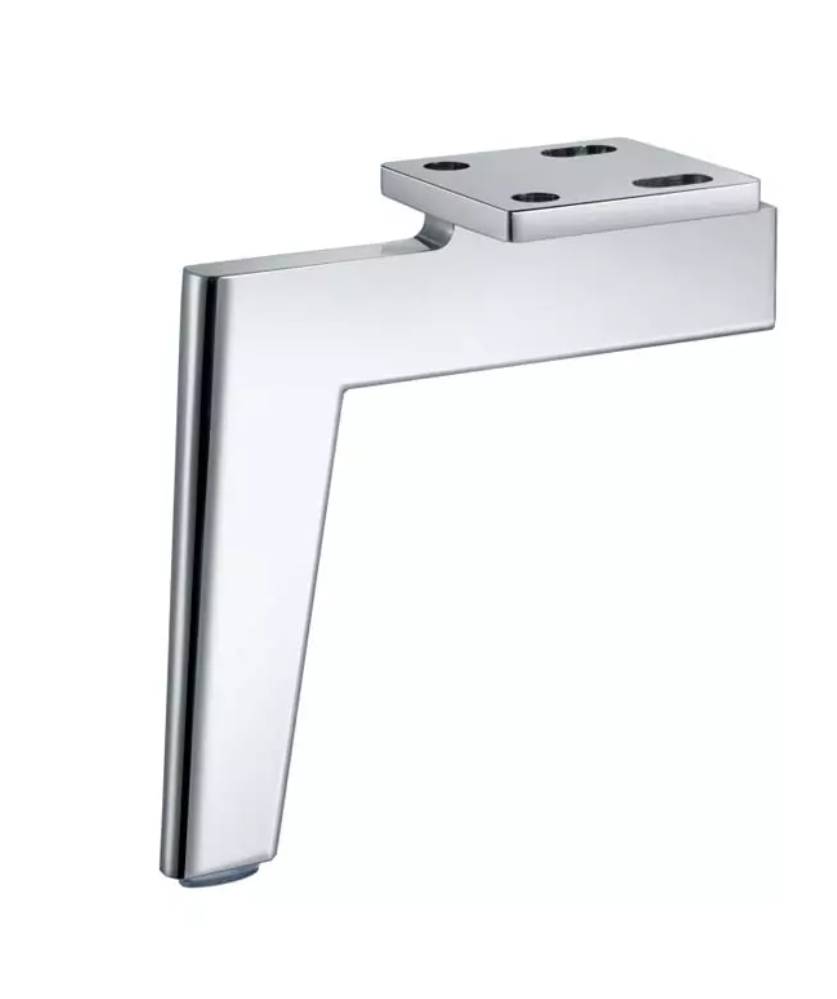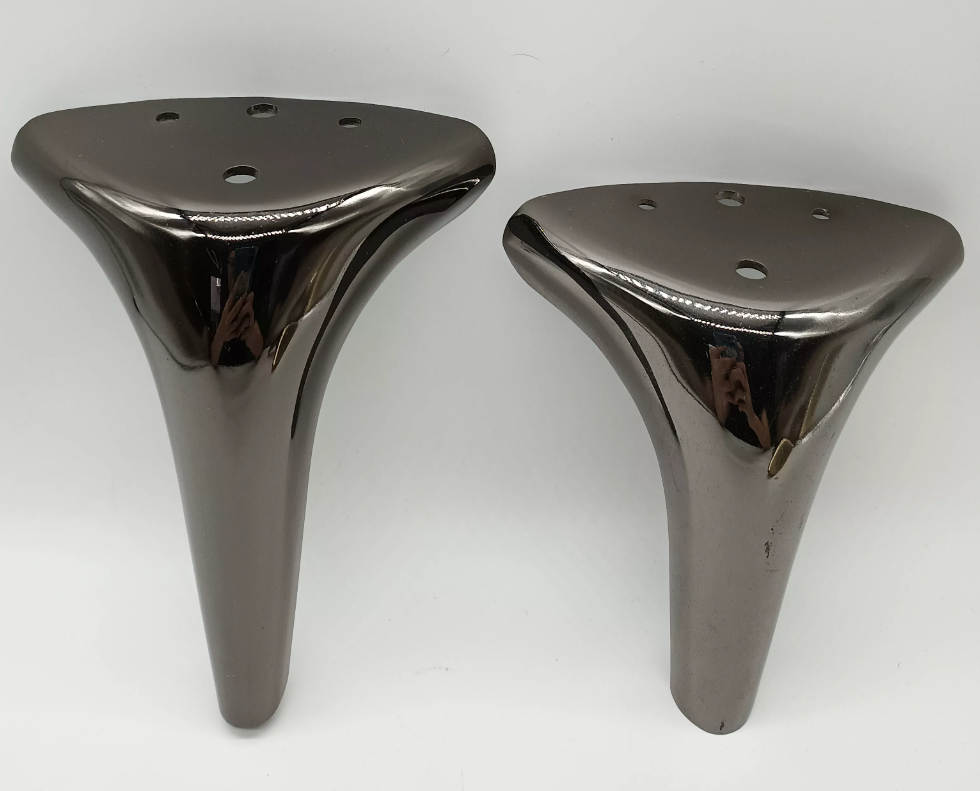Views: 0 Author: Site Editor Publish Time: 2025-06-18 Origin: Site









Metal furniture legs are becoming a staple in modern home design. Their strength and sleek appearance add both function and style. As metal legs gain popularity, many homeowners are choosing them for their furniture.
In this post, we'll explore the benefits, types, and practical uses of metal furniture legs in your home decor.
Metal furniture legs are structural supports made from metals like steel, aluminum, or brass. They provide strength and durability, making them a popular choice in modern furniture designs.
Compared to materials like wood or plastic, metal legs are generally more robust. Wood, while aesthetically pleasing, can be prone to wear and damage. Plastic, on the other hand, lacks the sturdiness that metal offers but is lighter and cheaper. Acrylic legs might look similar to metal but don't have the same strength or long-lasting qualities.
Metal legs come in various styles, including sleek and minimalist designs, making them versatile for many types of furniture. Whether it's a modern sofa or a vintage dining table, metal legs can complement any style.
Steel is one of the most durable materials used for furniture legs. It's known for its strength and resistance to corrosion, making it perfect for heavy-duty furniture. Steel legs are commonly found in industrial and modern furniture designs. They add a sleek, sturdy look to sofas, tables, and chairs.
Aluminum is a lightweight metal, yet it’s highly corrosion-resistant. It’s often used for contemporary furniture due to its sleek appearance and practicality. Many modern chairs, desks, and minimalist tables feature aluminum legs. Aluminum is a great option when you want strong, yet lightweight furniture.
Brass brings a touch of luxury to any furniture piece. Its rich, golden hue gives it a high-end, vintage feel. Brass is durable and, over time, develops a unique patina. This material is often used for elegant sofas, vintage-style chairs, and decorative tables to add a sophisticated touch.
Iron is perfect for heavy furniture that needs added stability. It’s commonly used in vintage or industrial-style furniture. Iron legs provide both strength and character, making them ideal for large dining tables, bed frames, and heavy armchairs. Iron is also highly durable, withstanding daily wear and tear.
Some furniture combines metal with other materials like wood or glass. These blends create unique designs, balancing the strength of metal with the beauty of wood or the elegance of glass. For example, you might see metal legs paired with wooden tops or glass shelves, enhancing both functionality and aesthetics.

Metal legs are perfect for modern sofa designs. They provide a sleek, minimalist look while offering strong support. Common metal leg styles for sofas include straight, tapered, and angular designs. Many modern and industrial sofas feature these legs, adding a clean, polished finish.
In contemporary kitchens, metal legs give dining tables an industrial vibe. Metal legs are sturdy and complement both rustic and modern designs. Types of metal legs commonly seen on dining tables include straight, hairpin, and pedestal styles. They bring a modern, stylish touch while supporting heavy table tops.
Metal legs in chairs strike a balance between comfort and style. These legs are strong, ensuring stability, while maintaining a sleek look. You can find them in a wide variety of chairs, from lounge chairs to office chairs and dining chairs. Popular styles include sleek, slender legs or more robust, industrial designs.
Metal legs are a staple in modern bed frames, offering both strength and design. They elevate the bed, providing space underneath for storage. Metal legs come in various styles, from simple straight bars to decorative, ornamental designs. They contribute to the bed's aesthetic and overall durability.
Metal legs make coffee and side tables both functional and stylish. They are a great way to add an industrial or modern edge to small furniture pieces. Metal legs offer stability and flexibility in design, making it easier to pair them with various materials like wood or glass for a unique look.

Metal legs are built to last. Unlike wood, which can crack or warp over time, metal is resistant to damage and wear. It can handle heavy furniture without losing its strength, making it a long-term investment for your home.
Metal furniture legs blend seamlessly with various interior styles. Whether you have a modern, industrial, or minimalist home, metal legs work well with all types of furniture. Their sleek and clean lines complement different design themes, offering a sophisticated look that can adapt to any setting.
Metal legs are stronger and more stable than most other materials. They provide solid support for heavy furniture like sofas, tables, and beds. This strength makes them ideal for pieces that need extra durability, ensuring your furniture stays secure and sturdy for years.
Metal legs are easy to maintain. Unlike wood, which may need regular polishing or care, metal requires only a simple wipe-down. It resists stains, moisture, and dirt, making it a low-maintenance option for busy households. This makes metal legs ideal for those looking for hassle-free furniture upkeep.
When choosing metal legs, think about your room's style. For an industrial look, go for sturdy, raw metal legs. Mid-century modern furniture often uses tapered, sleek metal legs, while Scandinavian designs prefer simple, clean lines. Make sure the metal legs match your overall theme to create a cohesive space.
The size of your furniture impacts the height of its legs. Sofas usually have legs around 4-6 inches tall, while dining tables often require legs between 28-30 inches. If you're unsure, measure your furniture's height to ensure the legs are proportional. Chairs, especially dining chairs, usually sit lower, around 16-18 inches from the floor.
Metal legs come in various finishes like matte, glossy, brushed, or polished. Choose a finish that complements your decor. Matte finishes are perfect for a subtle, modern look, while glossy or polished finishes add elegance. Brushed metal has a more textured feel, great for industrial and contemporary settings.
Different metal legs support different amounts of weight. It's important to pick legs that match the weight of your furniture. For heavy tables or beds, opt for stronger materials like steel or iron. For lighter pieces, aluminum or brass might be enough. Always check the weight capacity of the metal legs to ensure durability.
To keep your metal legs clean, use a soft cloth and mild soap solution. Wipe them down regularly to remove dust and dirt. For a deeper clean, use a non-abrasive cleaner to avoid scratching the surface. If you have metal legs with a polished finish, use a metal polish to maintain their shine and remove any dullness.
Rust and corrosion can be a problem in humid environments. To protect your metal legs, apply a clear protective coating to seal the surface. Regularly check for any signs of rust and remove it with a gentle scrub using a wire brush or steel wool. For outdoor furniture, consider using weather-resistant coatings for extra protection.
Over time, your metal legs may get scratched or damaged. To restore them, clean the area thoroughly and then use a metal repair kit to fill in scratches or dents. For deeper damage, sanding the area gently and repainting it can help. If the legs are heavily scratched, you might need to replace them or consult a professional for repairs.
Metal furniture legs offer durability, style, and strength. They complement various interior designs, from industrial to modern. With easy maintenance and long-lasting qualities, metal legs are a great investment for any home. They provide both functionality and aesthetic appeal, making them a top choice for modern furniture.
A: Metal furniture legs are supports made from materials like steel, aluminum, or brass. They provide strength, durability, and a sleek appearance to furniture.
A: Consider your interior style, the size and height of your furniture, the metal finish, and the weight capacity of the legs to ensure a perfect match.
A: Clean metal legs with a mild soap solution, prevent rust by applying protective coatings, and repair scratches with a metal repair kit.
A: Metal legs are more durable, stable, and easier to maintain compared to wood or plastic. They offer greater longevity and aesthetic versatility.





